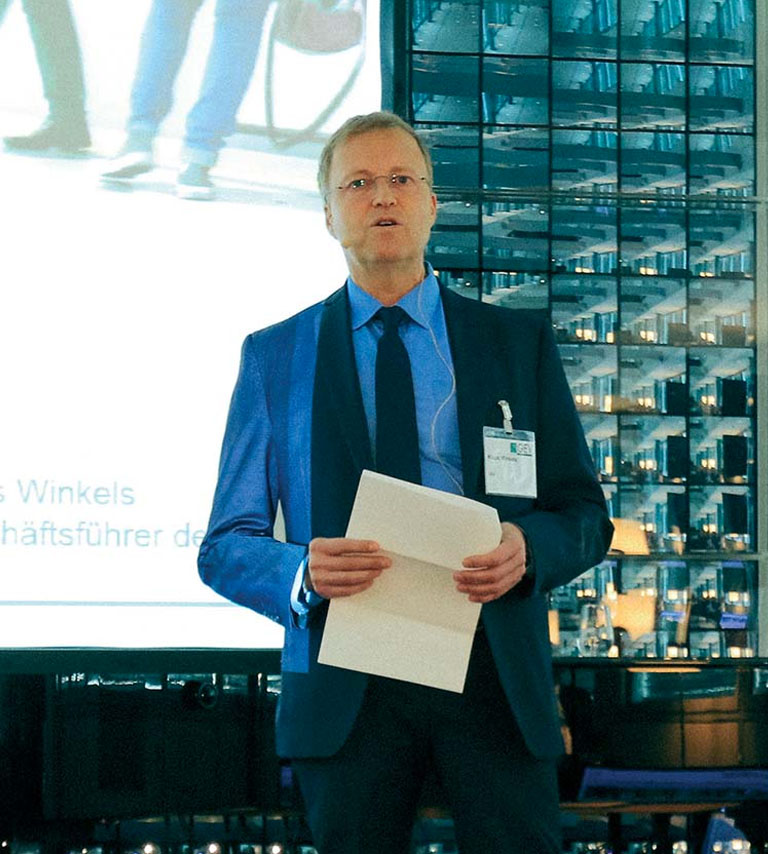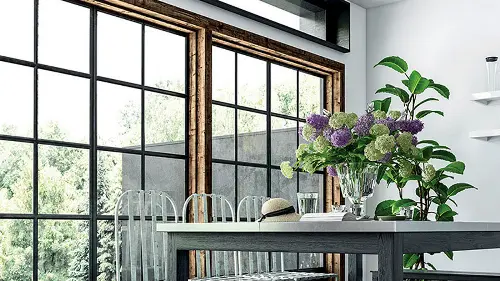

GEV: 20 years in business
Mapei has been working alongside this renowned professional network for years.
GEV (an acronym for ‘Gemeinschaft Emissionskontrollierte Verlegewerkstoffe, Klebstoffe und Bauprodukte e.V.’), the Association for the Control of Emissions in Products for Flooring Installation, Adhesives and Building Materials, was set up in Germany 20 years ago. Over the course of two decades it has set new safety regulations for the building industry through a certification system guaranteeing high safety standards for both product installers and end users. This year they celebrated their 20 years in business.
GEV (an acronym for ‘Gemeinschaft Emissionskontrollierte Verlegewerkstoffe, Klebstoffe und Bauprodukte e.V.’), the Association for the Control of Emissions in Products for Flooring Installation, Adhesives and Building Materials, was set up in Germany 20 years ago. Over the course of two decades it has set new safety regulations for the building industry through a certification system guaranteeing high safety standards for both product installers and end users.
The association, which is based in Düsseldorf, has created EMICODE, a system for meticulously assessing building products, certifying those with low emissions of volatile organic compounds (VOCs). Until GEV was set up, there were no standards for assessing the emissions given off by installation materials. EMICODE is now a well-established system providing useful guidance in choosing products for: craftsmen, designers and distributors, who can clearly decipher what the market has to offer in terms of low-emission systems and technology, with the additional benefit of EMICODE being a safe and unbiased classification system.
SAFEGUARDING HEALTH
Architects and designers need certified products for environmentally-friendly, eco-sustainable buildings. Mapei was soon aware of this requirement and joined GEV back in 2005. Protecting the environment, sustainability, health and safety have always been focal points for the company that has consistently developed its business and environmental philosophy around these issues.
The Mapei Group is currently the company with the highest number of GEV licenses, offering its customers an extensive portfolio of class EC1PLUS (“very low emission”) products. Uwe Gruber, General Manager of the Mapei Group’s German associate company, has also been on the GEV Board of Directors since 2012 and was appointed Vice-President in January 2016.
According to Uwe Gruber, “EMICODE has had a major influence on providing artisans, designers, users and distributors with a system for helping choose low-emission products and systems. EMICODE is an absolute guarantee of quality and health protection in any setting, as far as installation materials and products used in building are concerned. It is worth pointing out that manufacturers’ efforts both nationally and internationally are of enormous importance in helping develop new technologies for the benefit of both operators and consumers”.
124 manufacturers now belong to GEV, half of them from outside Europe and overseas. Over 5,000 products are certified through this process, and the number is on the increase.
A BIT OF BACKGROUND INFORMATION
Why was GEV set up? The situation was very different at the end of the 2nd World War: in the 1950s damage due to materials for installing floors was not of any real concern. Protecting workers and end users took second place to economic growth. Over subsequent decades, the percentage content of solvents was slowly decreased until they were virtually completely banned from products. This was enforced in Germany by BG Bau (a legal insurance company against accidents and injuries based in Berlin, which operates in the building industry and other associated services, aimed at both companies and workers) through “Gisbau”, an information system about dangerous and hazardous materials. This system provided initial guidelines for protection at work until technological prog-
ress in the 1990s resulted in a drastic reduction in volatile organic compounds.
Some of the leading manufacturers of materials for installing floors met on 24th February 1997 to set up EMICODE to provide all the necessary protection for workers in the industry, consumers and the environment. EMICODE went on to exceed all expectations. The label sets assessment standards for product emissions verified through unbiased, non-rival laboratory testing. Compared to other certification systems, it carries out more careful monitoring thanks to checks carried out on product samples after they have been certified.
Market pressure has resulted in EMICODE expanding from its original range of products for installing floors to include almost all interior building products. EMICODE has defined new sets of products based around categories of goods.
Manufacturers are also responsible for the project’s notable success: it is important that they are willing to submit their products to these tests. “A vital factor in GEV’s success is being in line with the market”, so Klaus Winkels, GEV’s managing director, notes. “It is not a matter of manufacturing the best possible products but of backing an enterprise in the industry that benefits everybody involved. Measuring and testing carried out by private bodies will never be unbiased and inevitably lead to errors of judgement, while classification into different categories of emissions has meant that both artisans, craftsmen, and consumers have placed their trust in the EMICODE label over the last 20 years.
BIG CELEBRATIONS IN DÜSSELDORF
At the end of April, GEV celebrated 20 years of good living in the famous Dreischeibenhaus skyscraper complex in Düsseldorf, together with over 100 delegates from some of the leading players in the construction materials and chemicals for building industries.
A number of speakers took the stage and there was also an interesting roundtable. Dirk Mayer-Mallmann, Marketing Manager of Mapei’s German associate company Mapei GmbH, explained (with case studies to hand) how Mapei products receive EMICODE certification as part of corporate procedure and how people can be suitably information about these matters.
During breaks in proceedings, guests chatted in good company while enjoying a delicious buffet and fabulous view of the city from the 94-metre-high terrace of Dreischeibenhaus skyscraper.
This article was taken from the German Realtà Mapei 20/2017 published by Mapei GmbH, whom we kindly thank.
Further information can be found at www.emicode.com and www.mapei.de
(Photo credits: GEV/EMICODE)











